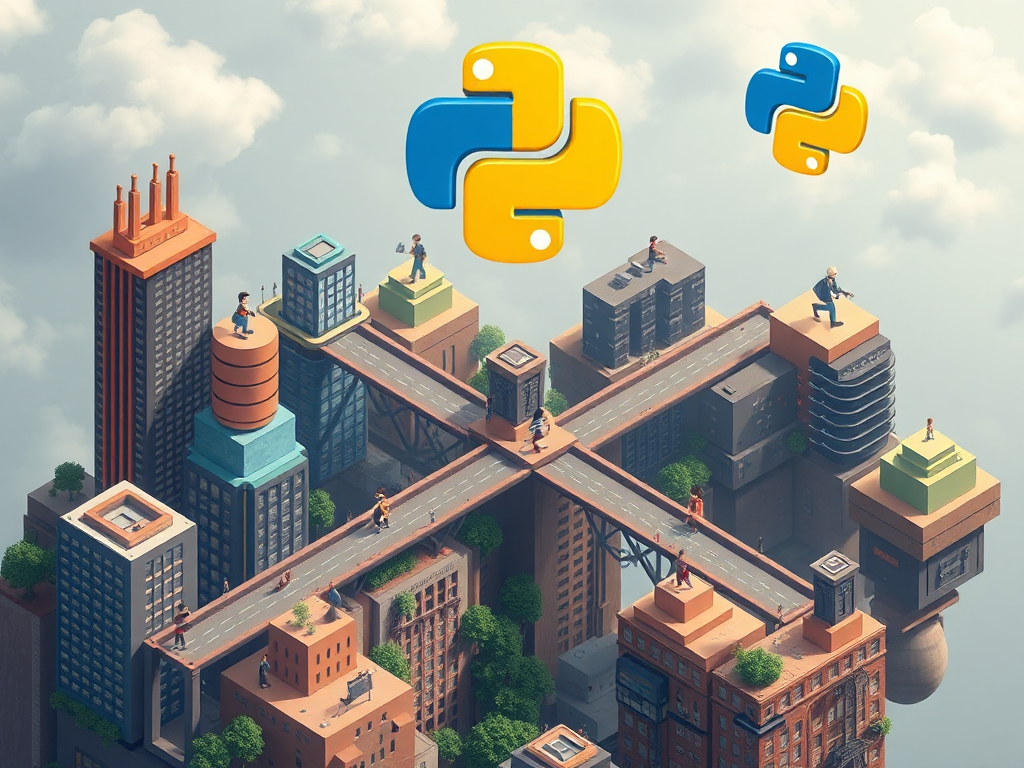Origin
Have you often encountered such troubles: after modifying a piece of code, you find the effect unsatisfactory but can't find the original version to restore it? Or when collaborating with colleagues on development, code merging always results in conflicts? These problems used to trouble me in my early programming career. Until I later encountered Git, these problems were perfectly solved. Today, let me take you to deeply understand Git, this powerful version control tool.
Understanding
Speaking of version control, you might think of manually copying files and renaming them, like "project_v1.py", "project_v2.py". However, this method has many problems: chaotic file naming, difficulty in tracking modification history, difficulties in collaboration, etc. Git provides us with an elegant solution.
Git is a distributed version control system, like a time machine for projects, capable of recording every change in the project. I often compare Git to a detailed diary, recording every important moment from the project's birth to growth. Through Git, we can return to any historical state of the project at any time, just like browsing a diary.
Getting Started
To start using Git, you first need to install it on your computer. On Windows, you can download the installer from Git's official website; on Mac, you can install through Homebrew; on Linux, use the package manager. After installation, some basic configuration is needed:
git config --global user.name "Your Name"
git config --global user.email "Your Email"
This configuration information will be used when you commit code, letting other collaborators know who made these changes.
Practice
Let's learn Git usage through a real Python project. Suppose we're developing a simple calculator program:
class Calculator:
def add(self, x, y):
return x + y
def subtract(self, x, y):
return x - y
First, we need to initialize a Git repository:
mkdir calculator
cd calculator
git init
Now, let's add the code file to Git's management:
git add calculator.py
git commit -m "Initialize calculator class, implement addition and subtraction functions"
This way, we've completed our first code commit. As the project develops, we might need to add more features. Creating a new branch is a good idea at this point:
git checkout -b feature/multiplication
In the new branch, we add multiplication functionality:
def multiply(self, x, y):
return x * y
After adding the new feature, we need to commit the changes:
git add calculator.py
git commit -m "Add multiplication function"
Deep Dive
In actual work, using Git is far more complex than the example above. I remember once when our team was developing a machine learning model, we encountered an interesting situation. We needed to maintain multiple versions of the model simultaneously, each version having its specific application scenario.
At this point, Git's branch management showed its power. We created dedicated branches for each version:
git branch model/v1-basic
git branch model/v2-advanced
git branch model/v3-experimental
This organization method allows us to easily switch between different versions while keeping the code neat and orderly. When a problem occurs in a certain version, we can quickly locate the specific commit:
git log --graph --oneline --all
This command will display a nice commit history graph, helping us understand the code's evolution process.
Tips
Throughout my use of Git, I've summarized some practical tips:
- Commit messages should be clear and specific. For example:
git commit -m "Fix: Handle division by zero exception in calculator's division function"
git commit -m "fix bug"
- Frequently use git status to check repository status:
git status
- Create branches before important operations:
git checkout -b backup/important-feature
Advanced
Once you're familiar with basic operations, you can try some advanced features. For example, use git rebase to organize commit history:
git rebase -i HEAD~3 # Organize the last 3 commits
Or use git stash to store current work:
git stash save "New feature under development"
git stash list # View stash list
git stash pop # Restore the most recent stash
Standards
In team collaboration, following certain Git usage standards is very important. I suggest:
- Keep the main branch stable, conduct all development in feature branches
- Perform code review before committing
- Regularly sync updates from the remote repository
- Use meaningful branch names and commit messages
Tools
Besides the command line, there are many excellent Git GUI tools:
- PyCharm's built-in Git tools
- SourceTree
- GitKraken
- GitHub Desktop
These tools can make Git operations more intuitive, especially suitable for beginners. However, I suggest mastering command line operations first, as this helps better understand Git's working principles.
Reflection
While using Git, I've found many people treat it as a simple file backup tool. This understanding is one-sided. Git is not just a version control system, but also a collaboration platform, code management tool, and project documentation system.
Looking Forward
As project scale expands, you'll find Git's value goes far beyond this. It can help you:
- Track code quality evolution
- Manage project release cycles
- Coordinate team members' work
- Build automated continuous integration processes
Summary
Git is an indispensable tool in modern software development. Through this article's study, you should have mastered the basic usage of Git. But to truly master Git, you still need to continuously accumulate experience in practice.
What feature of Git attracts you the most? Welcome to share your thoughts and experiences in the comments section.




 Previous
Previous 





